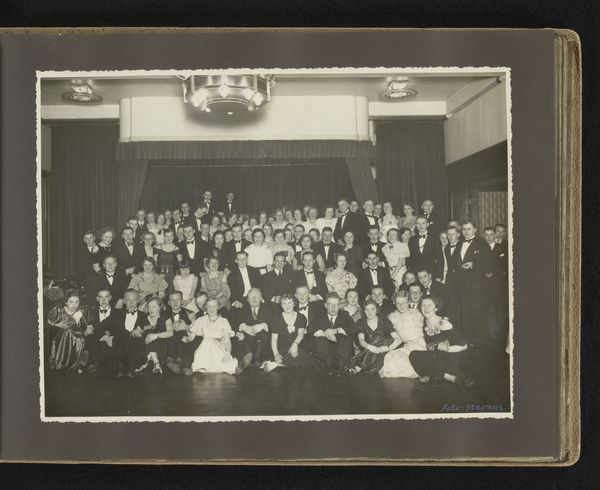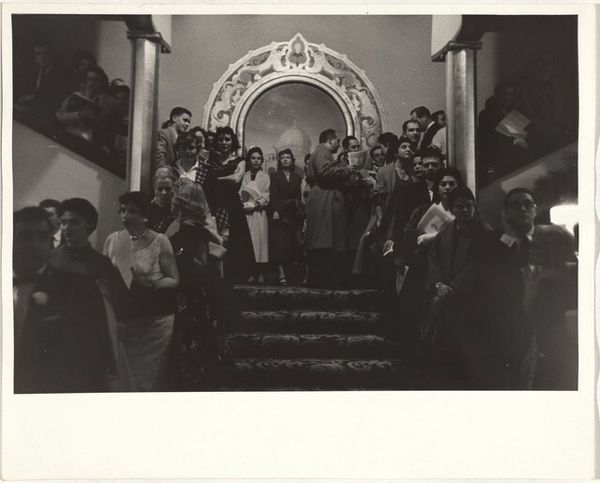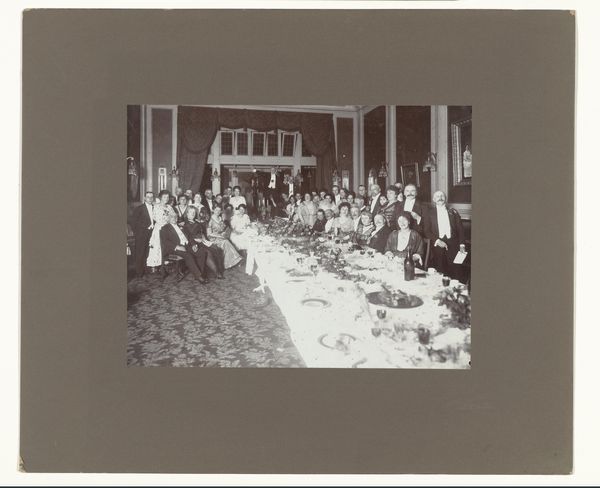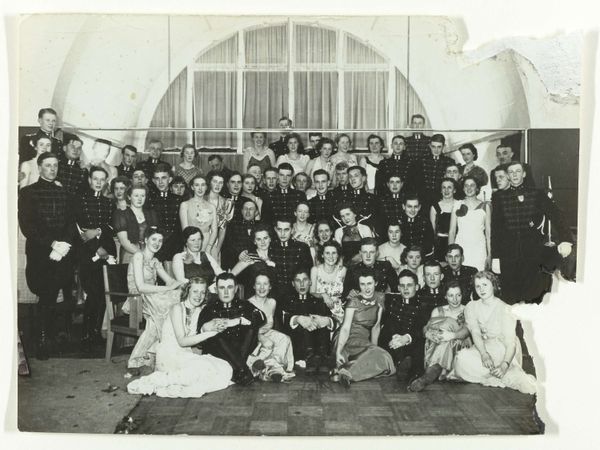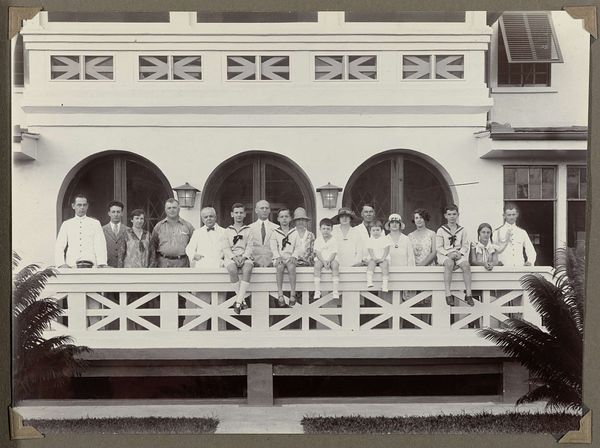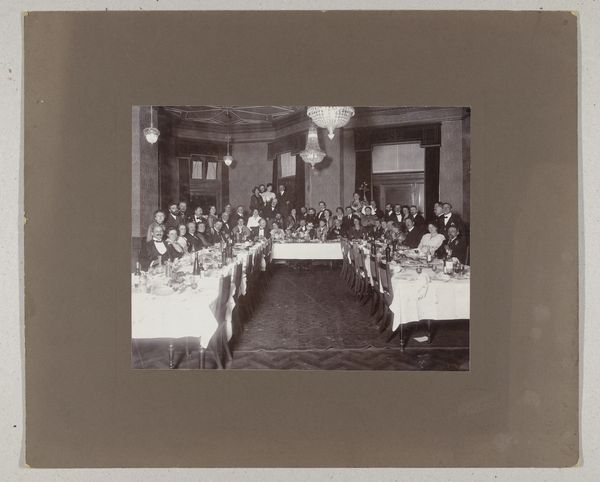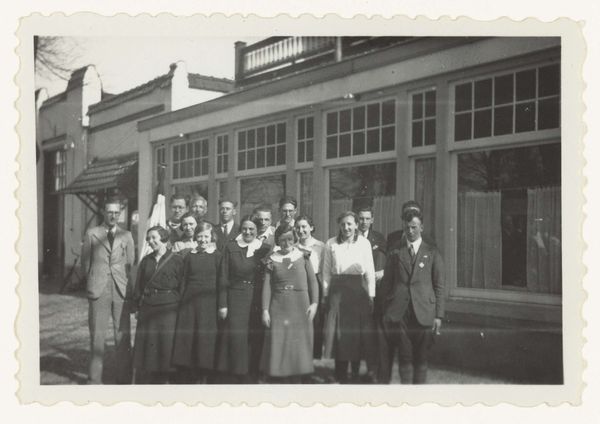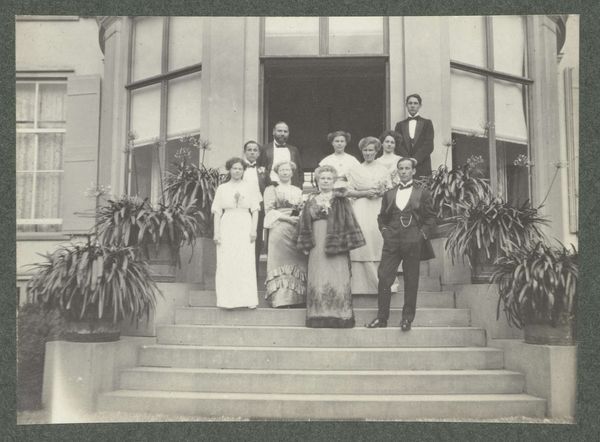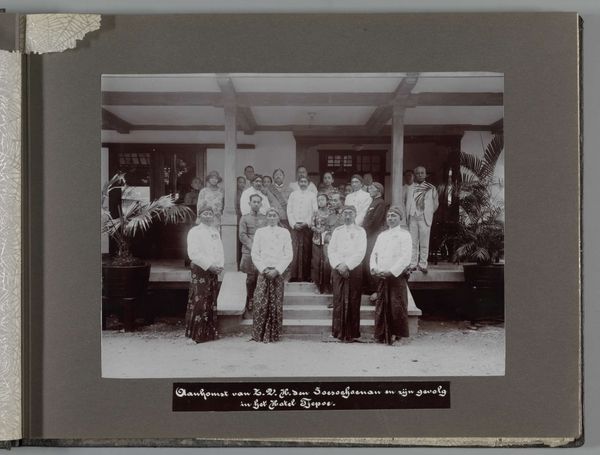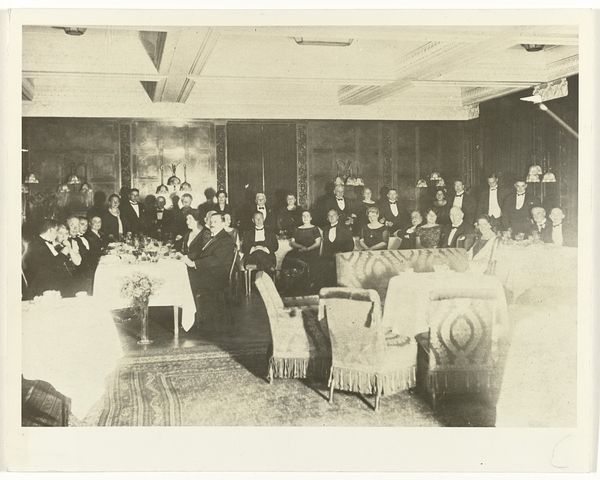
photography
#
portrait
#
dutch-golden-age
#
archive photography
#
photography
#
culture event photography
#
historical photography
Dimensions: height 22.5 cm, width 25.5 cm
Copyright: Rijks Museum: Open Domain
Curator: This photograph captures the farewell dinner of Governor Max Buttner van der Jagt, likely around 1929. It offers a fascinating glimpse into colonial society. Editor: My immediate impression is the sheer number of people meticulously arranged, almost like a stage production. The contrast between light and shadow adds a sense of formality. What were these kinds of photography printed on? Curator: While we don't know exactly what material, it would most likely have been a silver gelatin print given the period, producing those distinct monochrome tones. The image functions as a visual record of power. This gathering serves to underscore the social hierarchy of the time. Editor: Absolutely. The focus on the men's tailoring, the fabrics of the women’s dresses, tells a story of wealth and consumption. Do you notice the patterned carpet? It adds an almost tactile dimension. How do these details play into your view of social hierarchy? Curator: It reinforces it. The setting itself, the architecture, speaks of Dutch colonial governance. The attendees represent the elite—administrators, business leaders, their spouses—individuals deeply invested in and benefiting from the colonial structure. Note how everyone has their position for their rank and relationship with Buttner van der Jagt. Editor: Indeed. You see a mixing of fabrics as well; the women wearing Western dress mixed with what looks to be traditional batik fabrics worn by a handful of attendees. Curator: Precisely. It is a negotiation—acknowledging local traditions while firmly maintaining European standards and dominance. It’s the soft power of cultural assimilation alongside very real political authority. Editor: Fascinating. So, beyond just the people documented, we can extract from the print media and processes themselves deeper understandings of these global histories. Curator: Precisely, it encourages us to look closely at the social context of its production, in this case as a portrait representing a political legacy. Editor: Indeed. Thank you. I'll think of the image now in terms of layered manufacturing—from photographic supplies to sartorial tailoring!
Comments
No comments
Be the first to comment and join the conversation on the ultimate creative platform.
